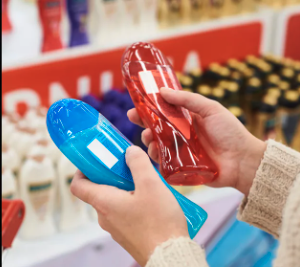
In today’s market, packaging design is more than just a protective layer for a product—it’s a powerful tool that influences the subconscious mind of consumers. By incorporating neuro-marketing tactics like biomotive triggers, brands can motivate consumers to take action before their conscious minds have even had a chance to respond. Here are five rules to achieve this:
1. Go Minimalist
Minimalist designs are increasingly popular, and for good reason. Companies like Apple utilize this principle to effectively communicate their purpose, convey their brand message instantly, and eliminate confusion and friction from the decision-making process. Simplicity allows the essence of the brand to shine through, making a lasting impression with minimal effort.
2. Shelf Shout
Standing out on the shelf is crucial in a competitive market. Utilizing distinctive colors and attractive shapes can make your brand immediately recognizable. Nescafe is a prime example of this tactic in action; its enticing design, shape, and color make a delicious statement that stands out among other products.
3. Emotional Engagement
Engaging consumers emotionally can create a deep connection with your brand. Packaging should tell a story or evoke memories that resonate with consumers. Paperboat excels in this area by tapping into nostalgic psychology with its sleek look, bold fonts, and mischievous content. This approach gives consumers a taste of forgotten stories, creating an emotional bond with the product.
4. Iconic Assets
The best packaging designs create a series of memorable visual assets that are consistently found in every piece of marketing communication. Coca-Cola is a master of this, with its agitated red color, dynamic contour wave, iconic bottle shape, and distinct logo typography. These elements are so memorable that they instantly connect consumers with the brand, reinforcing brand identity with every interaction.
5. Brand Memory
Packaging should be designed to be easily recalled, with distinctive elements and colours that stick in the consumer’s mind. Take Amul Butter, for example—the hand-drawn image of the girl in a polka-dotted frock with blue hair and a half ponytail is instantly recognizable. This mascot gives the brand a unique identity that consumers can easily remember and associate with quality and tradition.
By applying these five rules, brands can create packaging that not only protects the product but also engages consumers on a subconscious level, driving brand loyalty and increasing sales. In this era, packaging is a vital aspect of the marketing strategy, influencing consumer behaviour and building lasting brand connections.






